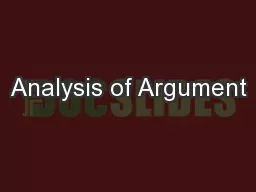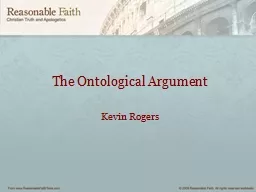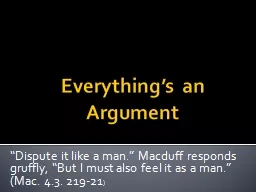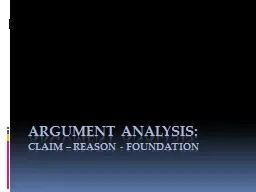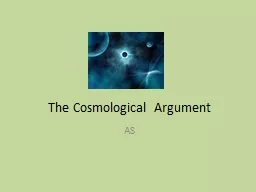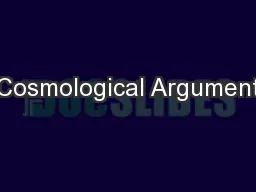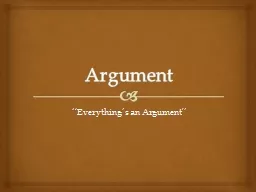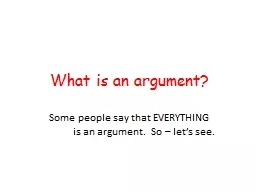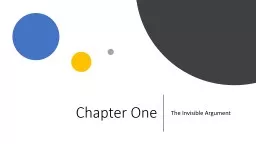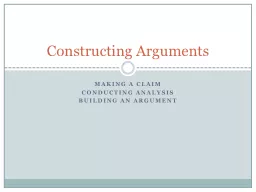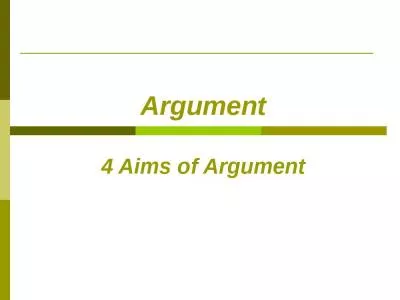PPT-Analysis of Argument
Author : aaron | Published Date : 2018-01-05
A Guide for Students The Task Analyze how the author builds her argument Look for evidence factsstatistics examples reasoning connecting evidence to claim stylistic
Presentation Embed Code
Download Presentation
Download Presentation The PPT/PDF document "Analysis of Argument" is the property of its rightful owner. Permission is granted to download and print the materials on this website for personal, non-commercial use only, and to display it on your personal computer provided you do not modify the materials and that you retain all copyright notices contained in the materials. By downloading content from our website, you accept the terms of this agreement.
Analysis of Argument: Transcript
Download Rules Of Document
"Analysis of Argument"The content belongs to its owner. You may download and print it for personal use, without modification, and keep all copyright notices. By downloading, you agree to these terms.
Related Documents

